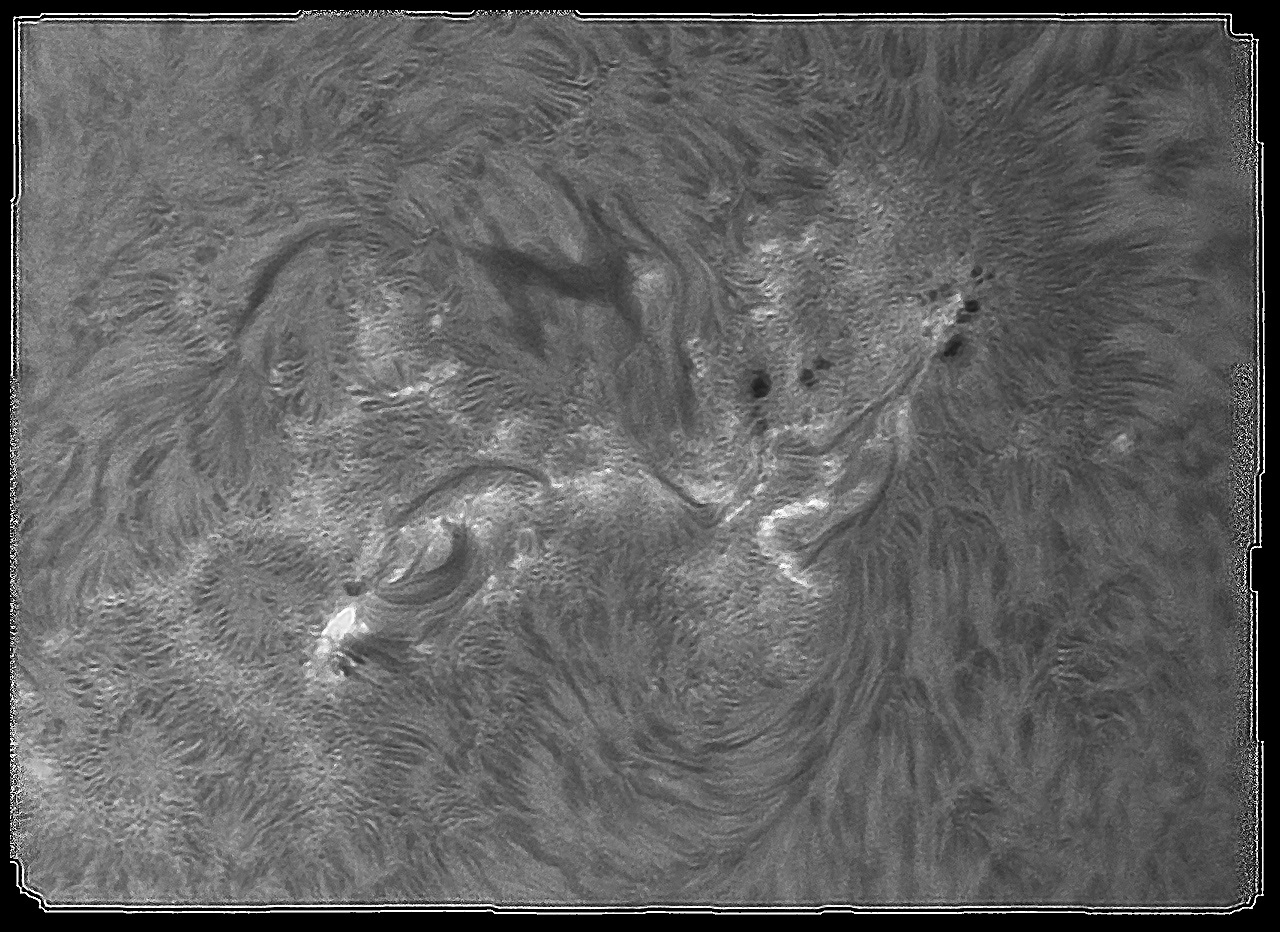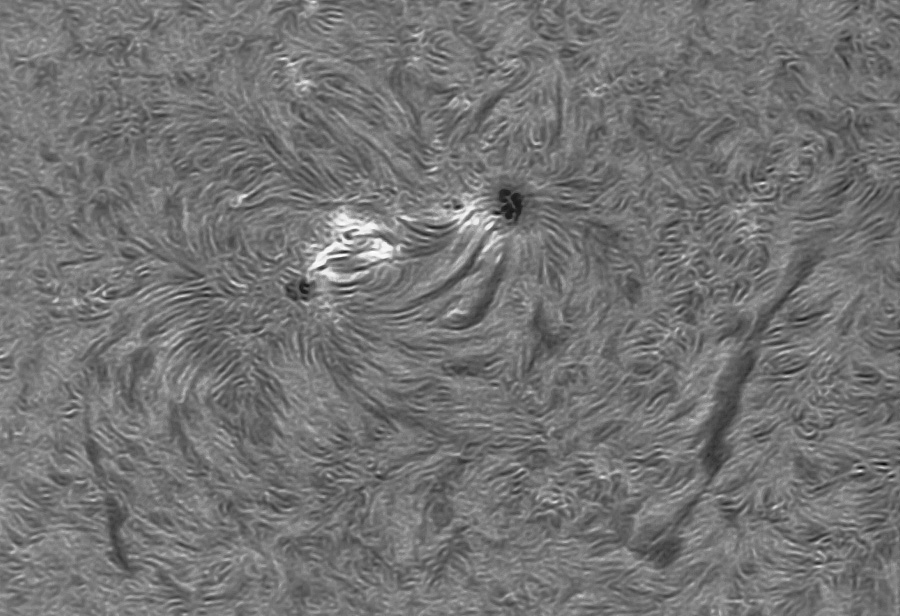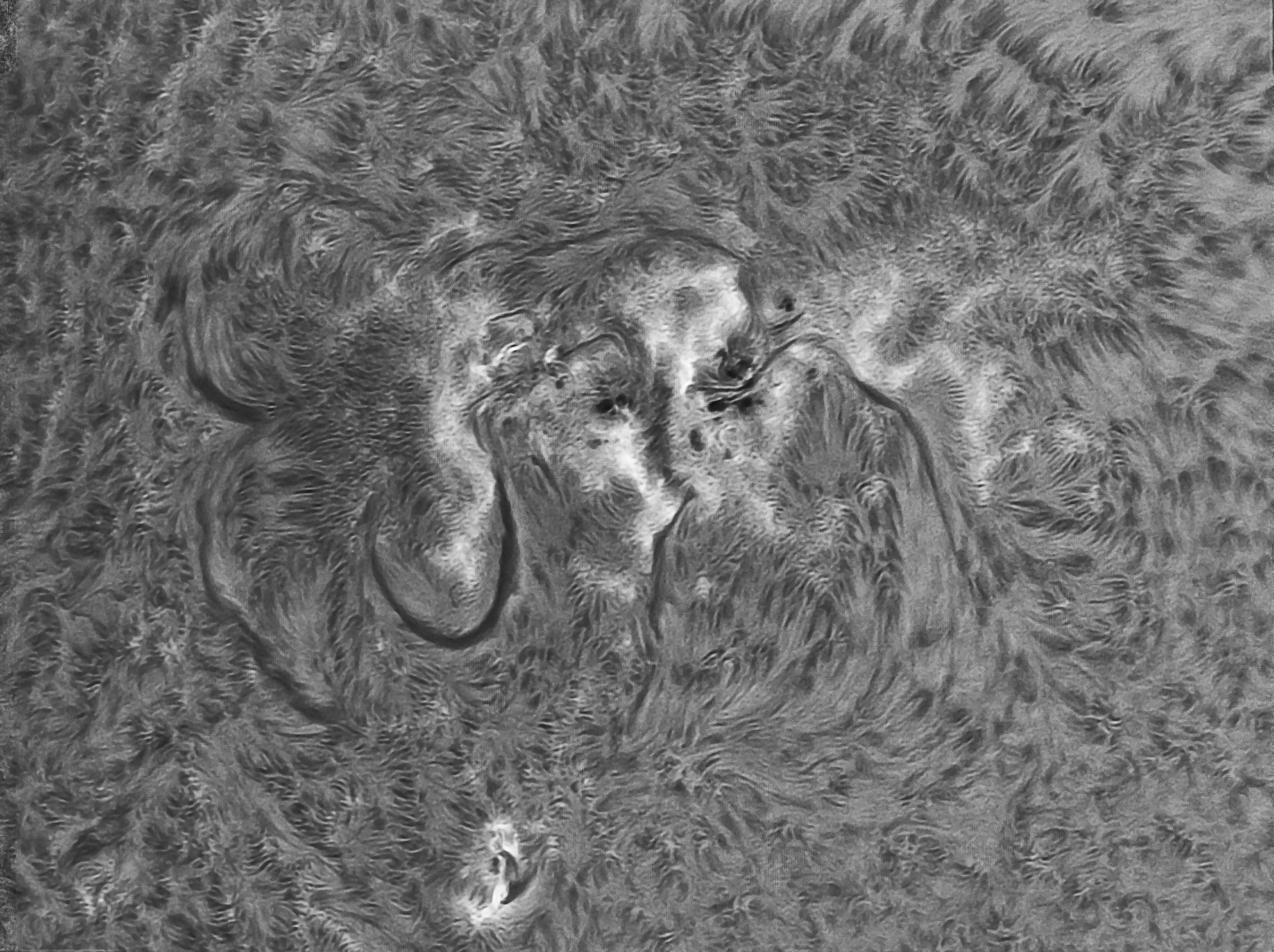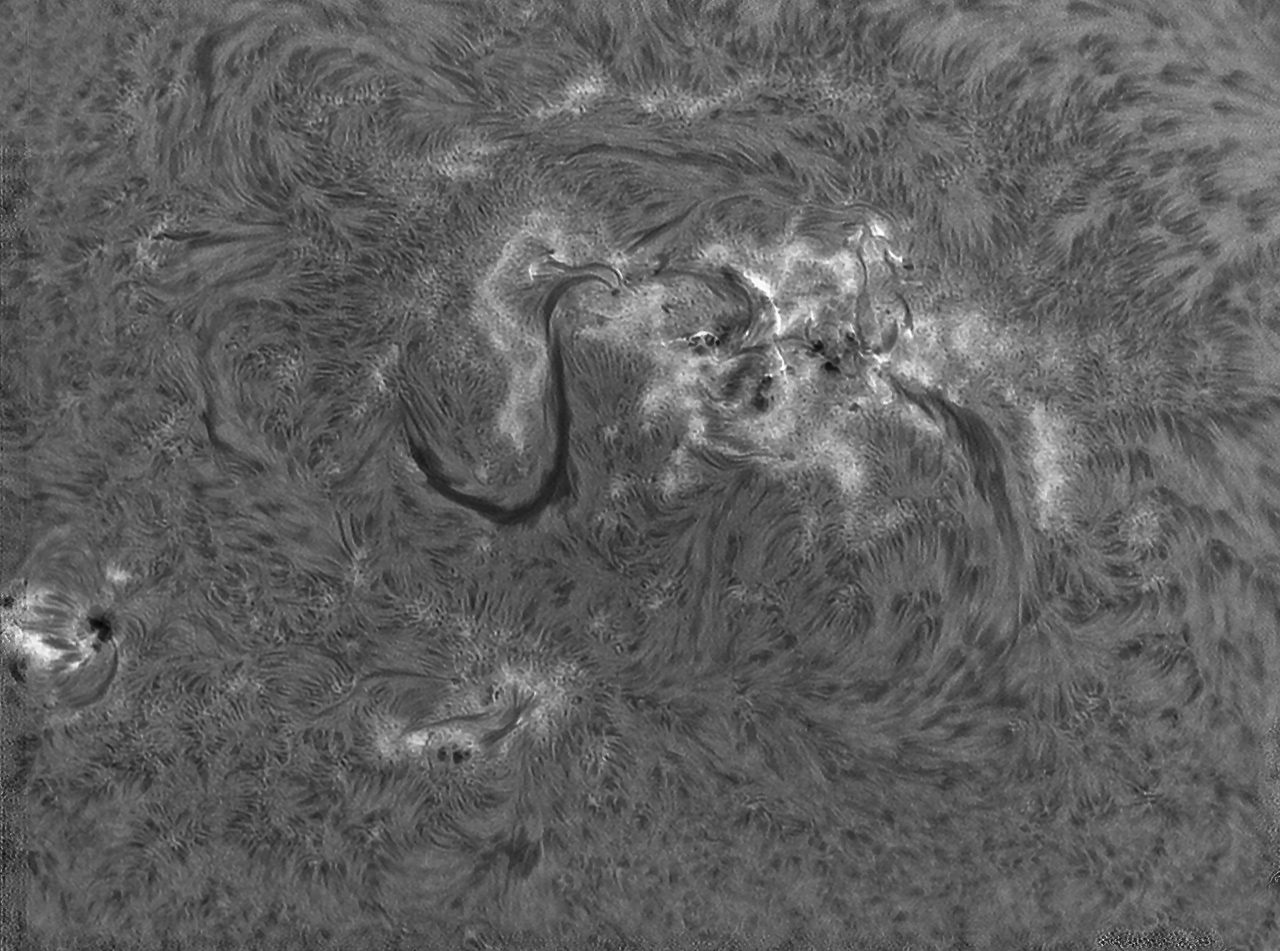For milky skies, for amber waves of...
06/01/2024. It's not that I don't have plenty to do just now, but the Sun has other ideas with an X-flare factory for show and an also-ran AR that would otherwise steal the thunder. Also, I want to prove out some notions about imaging while the sky permits.
Take today: with slightly milky skies but intervals of very steady air (also some moments of total crap, but that's what lucky imaging is all about), I wanted some high-gain (hence short exposure), small ROI (relatively fast data transfer), gamma-assisted (adding some contrast under the hazy high cirrus), quite long clips (because that worked really well yesterday, and because the seeing goes from excellent to horrid as I watch, and because the transparency varies, too, which means I might need to use lots of frames to get even tones).
There were moments of real clarity on the screen. Flares lit up all along a line adjacent the quiet group like waves breaking on a long shore; God's own iron filings traced huge magnetic fields near one isolated spot; and the total chaos of the X-factory made it hard to look away. Let's see what we got.

The quiet one.

God's iron filings.

The flare factory.
I binned all captures 2x2; I shot flats for every ROI; and I practiced focusing (there's a technique to it, to be discussed later if it worked). These are 10,000 frame clips. Distilling the clips down to the best 50 frames produced results that were generally too noisy. Images built from 1,000 frames were slightly soft (but sometimes nice). Using the best 200 frames produced crisp images with decent tones, so that's what you've got here. I used 800-1000 alignment points for each stack. I wanted more pixels than the native ROIs to work with in post, so I drizzled the clips 3x during stacking. Exposures ran 1.4-2.0 ms, which is a little longer than usual because under today's imperfectly transparent skies, I set the capture gamma well toward the contrasty end of things and that dims the overall image. In selecting an appropriate gamma, I attended to the number of unique levels FireCapture reported and selected gammas that produced plenty of levels (1,400-2000 compared to roughly half that with gamma off). I did most of the sharpening and most of the histogram adjustment in ImPPG. Inevitable cleanup and file prep were jobs for Photoshop, as usual. The final noise-reduction pass on the finished JPEGs might have been too aggressive. I like the tones, but I may have sacrified a little real detail to get them.
The flare factory has produced three x-flares in three days. I missed yesterday's by starting just a few minutes late; today's fired off very shortly after the Sun entered the trees.
Focussing: I selected the most contrasty gamma; zoomed in very close; then while gripping the Starlight focusser's fine-focus knob, I allowed the tip of my thumb to press against the face of the rough focus knob. That added some drag, and, more importantly, let me apply just a little pressure to the telescope to deter free vibration and bidirectional jostling while focusing. This worked out nicely. The steadier image greatly reduces the zone of indifference between too far in and too far out. If you hit the middle of that range and call it good, you probably will be.
06/03/2024. Here's the flare factory again videoed through gaps in incoming clouds. It's 500 out of 3,000 frames (no time for more). The ROI was 1136x838 pixels. I captured with 2x2 binning, with moderate gamma, and gain set high enough for 1.4ms exposures (about 350). I drizzled 3x in AS!4, prepped the files in Photoshop, used ImPPG for initial sharpening and followed with some additional histogram tweaking and sharpening in Photoshop:

Not bad. Click if you wish. We're getting there, sampling and focal lengths wise. Note that the number of frames incorporated in the finished image is related to how aggressive further processing can be. In general, I can be much more aggressive with L-R deconvolution with a 1,000 frame stack than with a 200 frame stack, more with a 500 frame stack than with a 100 frame stach. 50 is noisy, 1000 is not. 200 is better than 50; 500 is better than 200. This is why 10,000 frame raw clips matter: they provide enough frames to permit me to be selective and build plenty of frames in the final stack.
Oddly enough, this frame benefitted from an appreciable amount of motion blur compensation. Is that related to the original choice of a stabilization anchor point in AS!4 or something else?
6/04/2024. Oh, bingo! Last night I found a discussion on CloudyNights about making and using pseudoflats for solar work. I've done similar stuff for both the Sun and deep-sky, but AstroTruck's workflow took a different approach. After a few experiments, the method seemed so promising that I turned it into a Photoshop Action. I've been using the action to rework old data all morning. Here, for example, is a clumsy, not-yet-entirely successful 4-panel full-disk mosaic from May 26:
 No clicking on that one. Yet.
No clicking on that one. Yet.
This may not be a game changer, but then again it might be. Not only does it make solar mosaics less daunting, but many close-ups are transformed into much cleaner images. Even those that have already been flat-fielded the old-fashioned way sometimes show remarkable improvement.
06/07/2024. The pseudo-flat process has been remarkable, especially when automated as an action. That full-disk image above and another I did earlier today took a while -- maybe an hour each. But today I basically solved the full-disk issue with a workable, swify workflow. It's been a good week. Let's go to the next page and have a chat about it all.
:: top ::